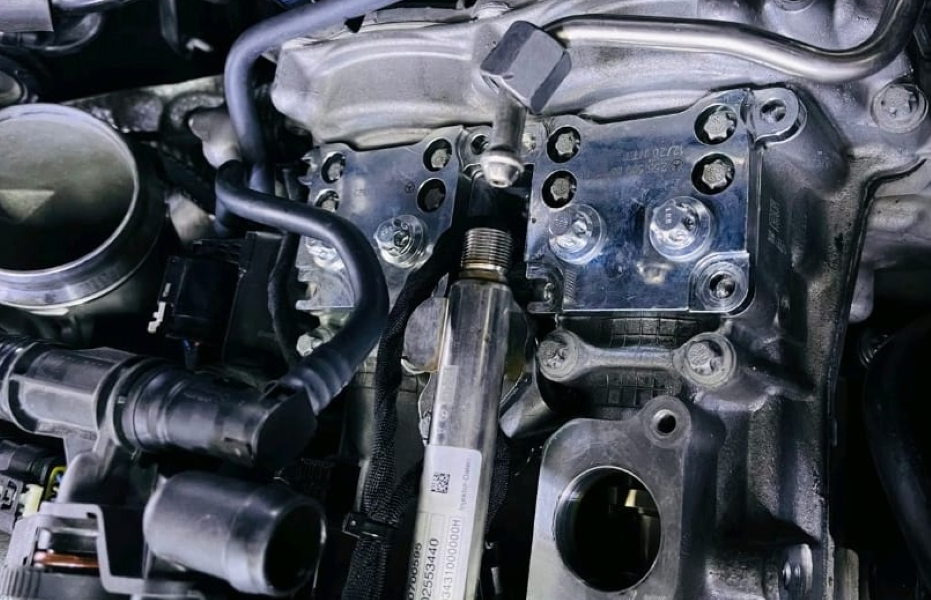Table of Contents
How to Tell If Timing Chain Is Bad: A Comprehensive Guide with a Mercedes M256 Engine Case Study
The timing chain is a critical component in your engine’s operation. It synchronizes the rotation of the crankshaft and camshaft(s), ensuring that the engine’s valves open and close at the proper times during each cylinder’s intake and exhaust strokes. A bad timing chain can lead to severe engine damage if not addressed promptly.
This article will help you understand the signs of a failing timing chain and guide you on how to check the timing chain, with a specific focus on the Mercedes M256 Engine.

Understanding Timing Chain Function and Failure
1.1 What Is a Timing Chain?
The timing chain is a metal chain that connects the crankshaft to the camshaft(s), ensuring they rotate in sync. Unlike a timing belt, the timing chain is generally more durable and designed to last the life of the engine, although it can wear out over time.
1.2 Common Symptoms of a Bad Timing Chain
- Rattling Noise from the Engine: A loose or worn timing chain can produce a distinctive rattling sound, particularly noticeable during a cold start.
- Engine Misfires: If the timing chain stretches or skips a tooth on the gear, it can throw off the engine’s timing, leading to misfires.
- Check Engine Light: Modern vehicles will trigger a check engine light if the engine’s timing is off, often caused by a faulty timing chain.
- Poor Engine Performance: A bad timing chain can result in decreased power, rough idling, and poor acceleration.
- Metal Shavings in Oil: As the timing chain wears, it can produce metal shavings that are visible in the engine oil during an oil change.
1.3 Risks of Ignoring Timing Chain Issues
Ignoring a bad timing chain can lead to catastrophic engine failure. The chain could break, causing the pistons to collide with the valves, resulting in extensive damage to the engine’s internals.
How to Check Timing Chain: Case Study on Mercedes M256 Engine
2.1 Why the M256 Engine?
The Mercedes M256 engine, a 3.0-liter inline-six with an integrated starter generator and electric auxiliary compressor, is a sophisticated engine that relies heavily on precise timing. Ensuring the timing chain is in good condition is crucial for maintaining the engine’s performance and longevity.
2.2 Tools Required for Checking Timing Chain
- OBD-II Scanner
- Xentry Diagnostics Tool (for Mercedes-specific diagnostics)
- Engine Timing Tool Kit
- Torque Wrench
- Socket Set

2.3 Step-by-Step Guide to Checking the Timing Chain
Step 1: Diagnostic Scan
Start by connecting the OBD-II scanner or Xentry diagnostics tool to the vehicle. Check for any fault codes related to the timing chain, such as P0016 (Camshaft Position A – Camshaft Position Correlation) or P0017 (Crankshaft Position – Camshaft Position Correlation).

Step 2: Visual Inspection
Remove the engine cover and inspect the timing chain through the timing chain cover (if accessible). Look for signs of wear, such as slack in the chain or damaged teeth on the sprockets.
Follow the steps using the follow images




Step 3: Listening Test
Start the engine and listen for any rattling noises, especially during cold starts. A rattling noise can indicate a loose timing chain.
Step 4: Physical Check (Advanced)
For a more in-depth check, you’ll need to remove the timing chain cover. This requires draining the engine oil and using the engine timing tool kit to lock the crankshaft and camshaft in place. Inspect the timing chain tensioner, guides, and the chain itself for wear.
Step 5: Measure Chain Stretch
If you suspect the timing chain is stretched, measure the distance between the links and compare it to the manufacturer’s specifications. If the chain has stretched beyond the allowable limit, it needs to be replaced.
Step 6: Reassembly and Testing
After inspection, reassemble the engine components, refill the engine oil, and clear any fault codes. Start the engine and test for normal operation.
Conclusion
Detecting and addressing a bad timing chain early is crucial to avoid severe engine damage. By following the steps outlined in this guide, especially the case study on the Mercedes M256 engine, you can effectively check the condition of your timing chain and ensure your engine remains in optimal condition. Remember to use the clustering keywords method to optimize your content for better search engine visibility and reach a wider audience.






Leave a Reply